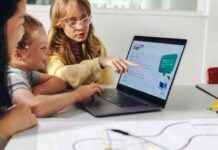Remote Classroom Creation: Key Tips for Success
If there’s one thing educators have learned in recent years, it’s that physical classrooms are not the only way to effectively teach students. With the right tools, technology, and atmosphere, teachers can create engaging remote classrooms that provide a full educational experience for their students. Remote classroom strategies offer numerous benefits for districts and the teaching profession as a whole, including addressing teacher shortages and creating dynamic learning environments.
Creating a remote classroom that is both appealing and functional requires careful planning and consideration. Here are some key tips and steps to help you get started on building the perfect home classroom.
Choosing the Right Location
The first step in creating an ideal home classroom is selecting a professional and organized space. Look for a room with ample wall space where you can hang charts and artwork to personalize the space and create a classroom-like environment. Remember, you don’t have to confine yourself to one room all day. You can move to different areas of your home for various activities, such as the kitchen for cooking segments or outdoors for nature lessons.
When choosing a room, prioritize natural light. Sunlight not only boosts mental well-being but also helps release serotonin in the body, which can prevent depression. A well-lit atmosphere can also enhance focus and productivity. Setting up your classroom in a room with windows, such as the living room or a spare room, can help you save on energy costs by relying on natural light instead of artificial lighting.
Teaching Tools
Implementing smart tech tools is crucial for translating lesson plans into engaging online content. An online whiteboard is a valuable resource for brainstorming lessons, organizing notes, and collaborating with other teachers in real-time. Pair your whiteboard with organizational tools like Hapara to keep assignments and slides in order, and use the Bloomz app to connect seamlessly with parents.
Incorporating educational games into your lessons can help keep students engaged and motivated. Programs like Prodigy Math Game and National Geographic Kids offer fun and interactive ways for students to learn essential concepts and explore the world around them. Additionally, a reliable video conferencing program like Google Classroom or Zoom is essential for facilitating communication and interaction with your students.
Look and Sound Your Best
While creating engaging and fun learning experiences is important, maintaining a professional remote presentation is equally crucial. Before each school day, ensure your camera and computer are functioning properly to avoid any technical issues during lessons. Invest in a high-quality microphone to ensure clear and crisp audio for your students. Consider using a dynamic microphone to minimize background noise or a lavalier microphone for consistent audio quality, especially if you move around frequently during lessons.
Designing the ideal remote classroom may require time and effort, but the benefits of creating a conducive learning environment for both you and your students are invaluable. By taking the time to plan and design your home classroom effectively, you can enhance the remote learning experience and foster a positive educational environment.
Author: Sam Bowman, Contributing Writer
Sam Bowman writes about people, tech, wellness, and how they merge. He enjoys utilizing the internet for community without having to leave his house. In his spare time, he likes running, reading, and combining the two in a run to his local bookstore. Connect with him on Twitter @SamLBowman1.





